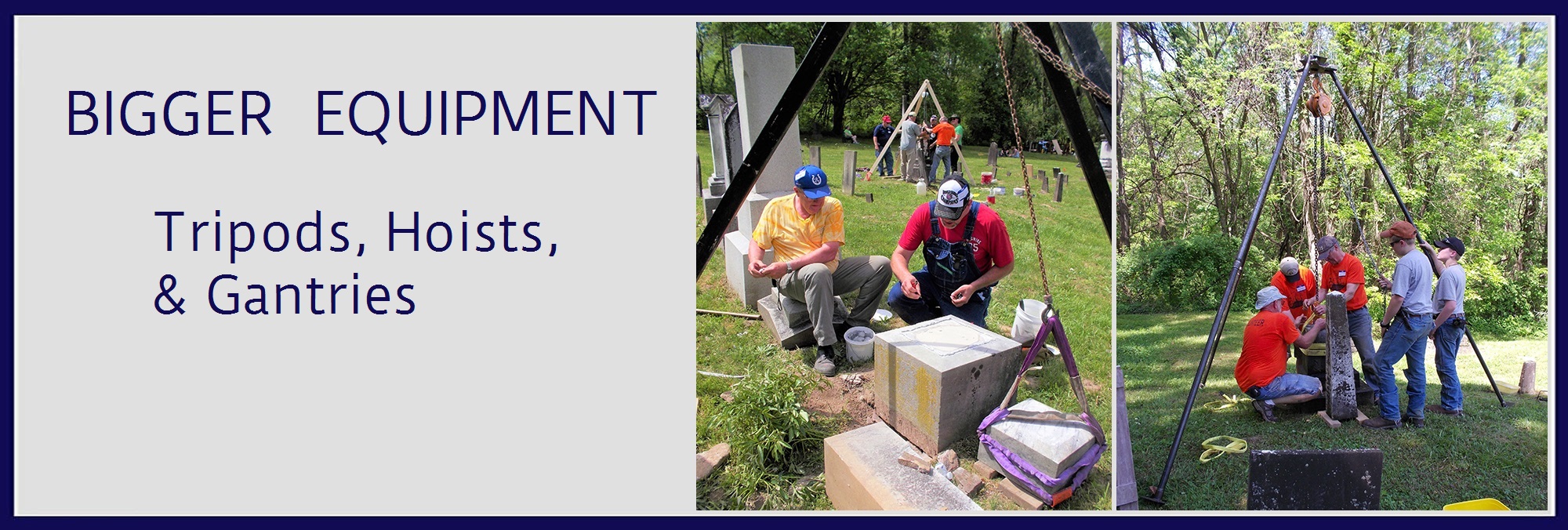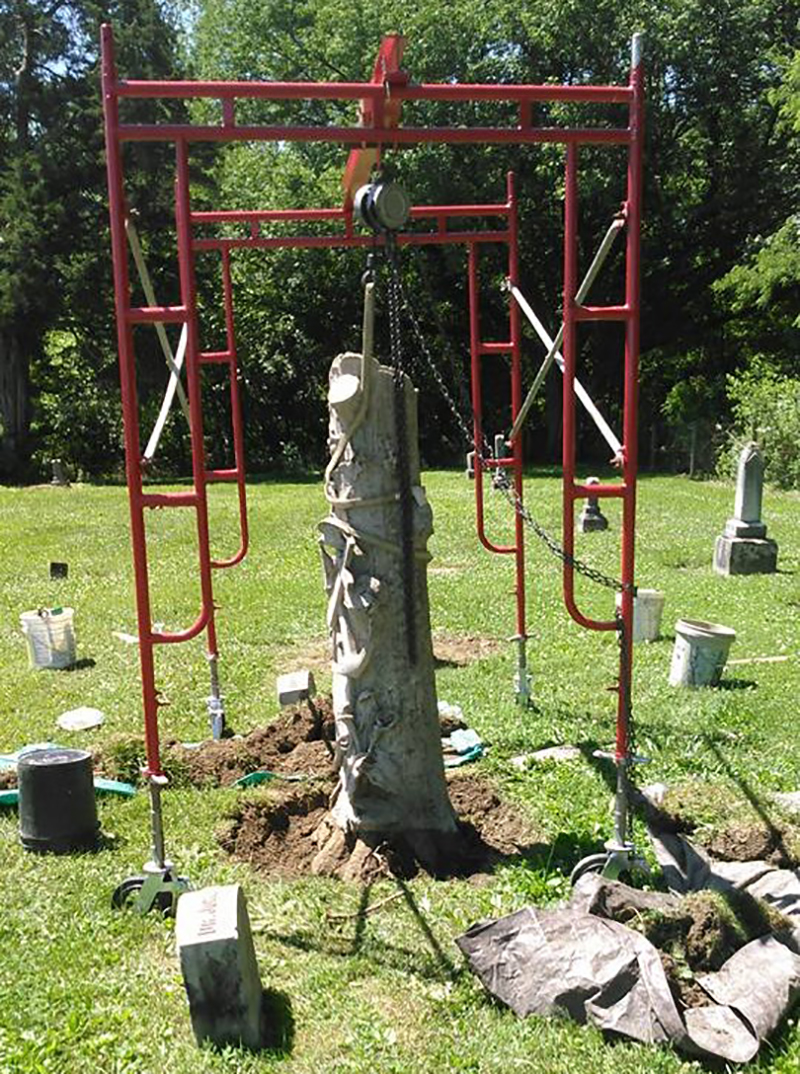BIGGER EQUIPMENT – Is our section that addresses equipment involving hoist work. You will also see examples of this under BASIC STANDARDS…Multi-Piece Monument. Lifting devices are important to any cemetery preservation work that involves stones of any significant weight. That significant weight will largely depend on a person’s physical limitations combined with a strong need for safety. Just because you may be able to brute lift or move a stone, does not mean it is the best thing to do physically. And obviously at some point the size and weight of stones will require lifting equipment of some kind. We would like to stress once again…a novice should not attempt procedures involving projects that move large stones with the equipment described in this section. Please work with an experienced professional and take a class to gain hands on experience before you attempt these things.
The following are examples of different lifting equipment. Some are examples of CCUS member’s equipment, and other examples are of equipment available by companies or nonmember home builds. There is a wide array of tripod and gantry systems to choose from. Once you acquire some training with some of this equipment, continue to become well informed on the different types, and choose the one you believe best suits your needs.

Before choosing or making your own tripod or gantry, you will need to look at the type of hoist you wish to acquire. There are many types and varieties of hoists by many different manufacturers. Take care when choosing one by doing some good research pertaining to the manufacturer. Ask questions of people who own and use them. Because all hoists are NOT created equal by any means. Cheaper priced hoists can wear out quickly and may also present safety issues when it comes to reliability. Your life may very well depend on the quality of the hoist you purchase.



You will also want to decide on how many tons it is rated for. NEVER attempt to lift its full rated weight. You are always better off with a hoist that lifts more weight than the job requires.

Tripods also come in a wide variety from wood, to metal, to aluminum. Wooden tripods are the easiest and most cost efficient to make. Tripods of wooden legs are stronger than you may think. But like all things, they have their limitations. There are several different avenues you can take concerning these wooden legs. From 2X4’s, to 2X6’s to 4X4’s, to 6X6’s, and so on. Then you will have to determine the length of the legs in accordance with the height of the object you are lifting. As well as other factors concerning this process. These are all things that must be taught to you by someone with experience through hands on training. The correct and safe hardware required that connects these legs is also another very important thing you will have to learn from a professional.

Many conservators prefer or also have a metal tripod in addition to their wooden ones. Many devise tripods like in the picture to the right, which consist of cast iron pipe. This allows them to add more pipe of different lengths to adjust height. And it makes transport easier as well.


Other examples of tripods on the market manufactured by different companies.
Gantries are another option for lifting. The type pictured below can also be referenced and found in our VIDEO section under Hoist Work.


Yet other options are scaffold systems with an “I” beam type supported hoist. These systems seem to be growing in popularity among those becoming gainfully employed at cemetery preservation. This set up can do a wide variety of cemetery work.

This one was created by CCUS member Reggie Ross of Gravestone. Reggie is by far one of our most engineering members.
As always we will continue to add to this section as we have been doing with the rest of the site. This is meant only an introduction to the larger equipment used in this field. We hope this gives you some idea of what work of this size entails. Be safe, be trained, and be well informed.
More to come on the subject of nylon straps.
